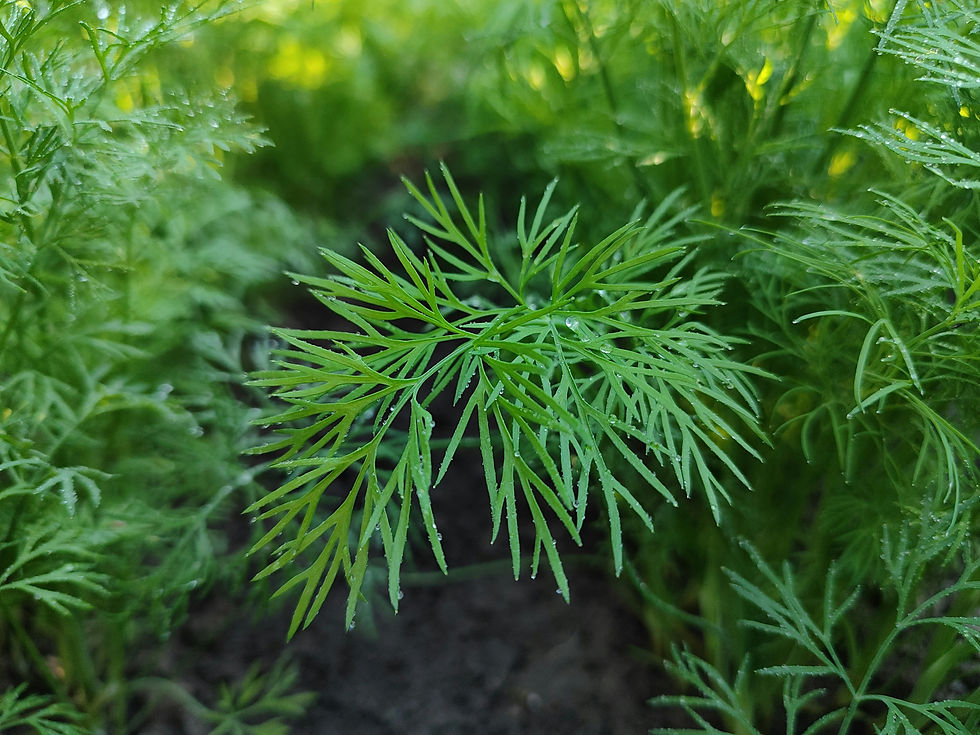Types of Mushrooms Easy to Grow: Cultivation Tips and Nutrient Needs
- Jonathan Valencia

- Jul 8, 2025
- 3 min read

Growing mushrooms at home is becoming increasingly popular—not just because it's fun and easy, but also because mushrooms are nutritious, fast-growing, and require very little space. Whether you're a gardening enthusiast or a beginner, there are several mushroom varieties that are easy to cultivate indoors or outdoors. In this article, we’ll explore the top mushrooms you can grow easily, how to cultivate them properly, and what nutrients they need to thrive.
Oyster Mushrooms (Pleurotus ostreatus)
Why They’re Easy to Grow:
Oyster mushrooms are one of the most beginner-friendly varieties. They grow fast, are resilient, and can thrive on a wide range of substrates like straw, coffee grounds, or sawdust.
Cultivation Tips:
Substrate: Pasteurized straw, sawdust, or used coffee grounds.
Environment: Temperature of 20–28°C (68–82°F), humidity around 85–90%.
Light: Indirect light is sufficient.
Harvest Time: 3–4 weeks from inoculation.
Key Nutrients Needed:
Carbon from straw or cellulose-rich substrates.
Nitrogen is essential, especially if you're using coffee grounds.
Calcium and Magnesium help improve growth and fruiting body formation.
Shiitake Mushrooms (Lentinula edodes)
Why They’re Easy to Grow:
Shiitake mushrooms are ideal for home growers using logs or sawdust blocks. They take longer than oysters to grow but offer a rich, savory flavor and high nutritional value.
Cultivation Tips:
Substrate: Hardwood logs (oak, beech) or sawdust blocks.
Environment: Temperature of 13–24°C (55–75°F), with 85–90% humidity.
Light: Moderate indirect light.
Harvest Time: 6–12 months for logs; 2–3 months for sawdust blocks.
Key Nutrients Needed:
Lignin and cellulose from hardwood logs.
Nitrogen supplements can boost yield (e.g., wheat bran).
Potassium and phosphorus support mushroom body development.
Button Mushrooms (Agaricus bisporus)
Why They’re Easy to Grow:
Button mushrooms are the most commonly consumed mushroom worldwide. They can be grown indoors using composted manure or pre-inoculated kits.
Cultivation Tips:
Substrate: Composted horse manure or commercial mushroom compost.
Environment: 18–22°C (64–72°F) with controlled humidity (70–80%).
Light: No light needed during the fruiting stage.
Harvest Time: 3–4 weeks from casing layer.
Key Nutrients Needed:
Nitrogen-rich compost supports healthy mycelium.
Calcium from gypsum helps balance pH and strengthens structure.
Moisture and organic matter are critical throughout growth.
Enoki Mushrooms (Flammulina velutipes)
Why They’re Easy to Grow:
Enoki mushrooms are delicate and grow best in cooler temperatures, making them a unique option for indoor winter gardening.
Cultivation Tips:
Substrate: Hardwood sawdust or corn cobs.
Environment: Cool temperatures (10–15°C or 50–59°F), high humidity (90–95%).
Light: Very little light needed.
Harvest Time: 3–4 weeks after inoculation.
Key Nutrients Needed:
Simple sugars and cellulose from sawdust.
Silica and calcium promote thin, elongated stems.
Balanced moisture is key to forming tight clusters.
Wine Cap Mushrooms (Stropharia rugosoannulata)
Why They’re Easy to Grow:
Wine Cap mushrooms are great for outdoor gardens and thrive in wood chips and straw beds. They’re perfect for beginners who want to try outdoor mushroom beds.
Cultivation Tips:
Substrate: Wood chips, straw, and garden soil.
Environment: Grows outdoors in shaded areas; prefers spring and fall temperatures.
Light: Indirect sunlight or dappled shade.
Harvest Time: 4–6 weeks after spawning.
Key Nutrients Needed:
Decaying wood fibers as carbon source.
Soil minerals like magnesium, potassium, and trace elements.
Moisture retention in the mulch bed ensures proper fruiting.
General Tips for Successful Mushroom Cultivation
Sterility: Always start with clean tools and sanitized substrates to avoid contamination.
Humidity: Keep your growing environment humid by misting or using a humidity tent.
Air Exchange: Good ventilation is important to prevent CO₂ build-up which can hinder growth.
pH Level: Most mushrooms prefer a slightly acidic pH (around 5.5–6.5).
Avoid Direct Sunlight: Indirect light is best for most mushrooms unless stated otherwise.
Recommended Video tutorial for beginner >> https://www.youtube.com/watch?v=CDjuk07E6rI
Conclusion
Growing mushrooms at home is a satisfying and nutritious hobby. By choosing beginner-friendly varieties like oyster, shiitake, or button mushrooms and providing the right environment and nutrients, you can enjoy fresh harvests year-round. Plus, cultivating mushrooms is a sustainable way to recycle waste products like coffee grounds and sawdust.
So go ahead—pick a variety, prepare your substrate, and start growing your own mushrooms today!































Comments